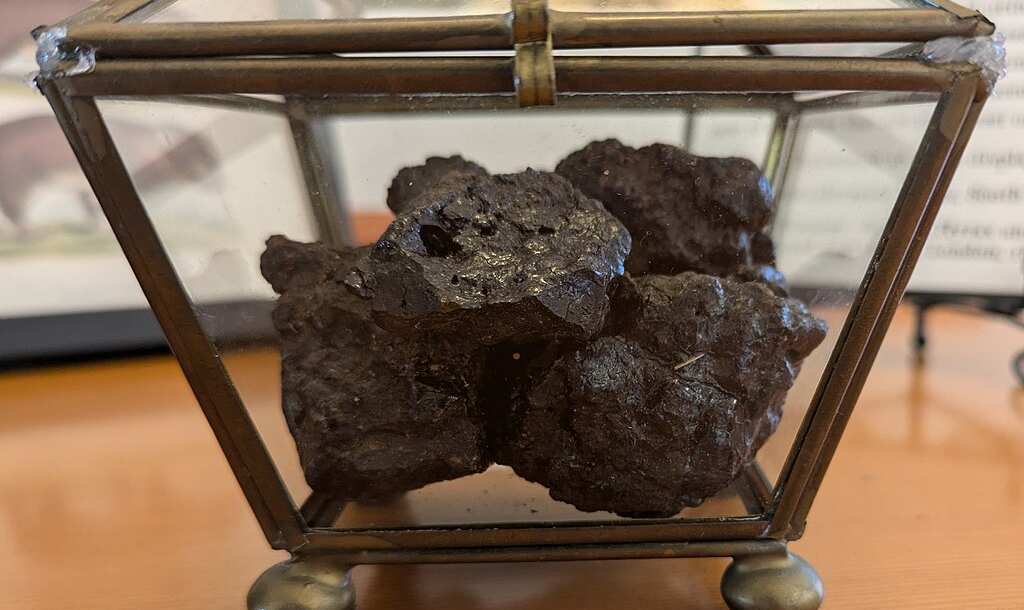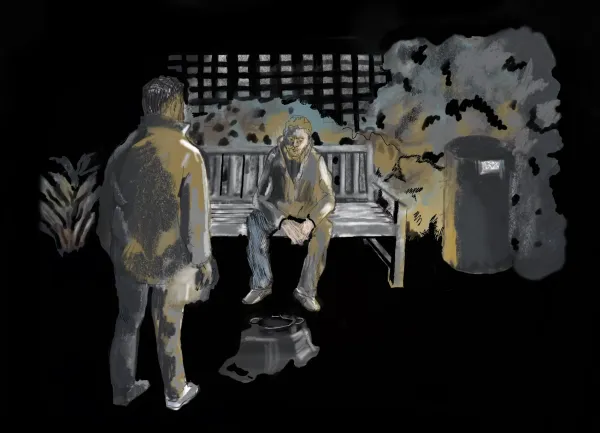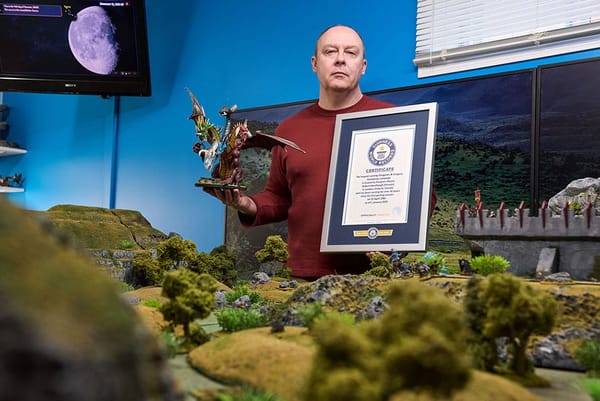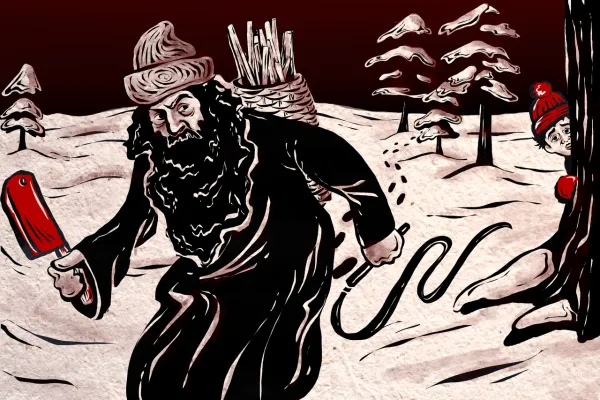Thousand-year-old poop is a key ingredient in perfume

From Wikipedia: "Hyraceum is the petrified and rock-like excrement composed of both urine and feces of the rock hyrax and closely related species. The rock hyrax defecates in the same location over generations, which may be sheltered in caves. These locations form middens that are composed of hyraceum and hyrax pellets, which can be petrified and preserved for over 50,000 years. It is also a sought-after material that has been used in both traditional South African medicine and perfumery. The material hardens and ages until it becomes a fairly sterile, rock-like material that contains compounds giving it an animalic, complex fermented scent that combines the elements of musk, castoreum, civet, tobacco and agarwood. The material is harvested without disturbing the animals by digging strata of the brittle, resinous, irregular, blackish-brown stone; because animals are not harmed in its harvesting, it is often an ethical substitute for deer musk and civet, which require killing or inflicting pain on the animal."
This Turkish hotel is suspended on metal beams over an archaeological dig

From Amusing Planet: "In 2009, a construction crew digging the foundation for a new hotel in Antakya, Turkey, made an astonishing discovery. They uncovered a vast mosaic dating back to Roman times, along with more than 35,000 artifacts spanning some 2,300 years from at least 13 different civilizations. Construction of the hotel was immediately put on hold, while a six-month excavation took place. Eleven years later, the 200-room Museum Hotel Antakya opened its doors. The hotel’s five floors are suspended on steel columns above the actual archeological site, where the 11,000 square feet Roman mosaic lay in-situ. The hotel’s lowest floor houses an open-air museum with glass floors and walkways providing a view of the mosaic and the various excavation pits. The guest rooms are stacked above this open space, hovering above the site in a stacked honeycomb structure, with glass windows directly overlooking the findings."
Computer chip designers used to put graffiti on their chips to foil copycats

From Hackaday: "Chip art, also known as silicon art chip graffiti or silicon graffiti, refers to tiny works of art embedded in integrated circuits (also called a chip or IC). An IC is printed with lithography instead of building parts one at a time and there is no extra cost to add features within the chips. One of the reasons why designers started employing chip art is to discover if a manufacturer or designer copied their work. Before the passage of the Chip Protection Act in the United States in 1984, several companies were using the term 'graffiti' to prevent counterfeit chips. However, often they would also carry 'contraband.' Designers can create all sorts of artworks on chips, ranging from the basic initials of the designer to complicated designs. Because of the tiny dimensions of the chip the numbers are not visible without an optical microscope."
Hi everyone! Mathew Ingram here. I am able to continue writing this newsletter in part because of your financial help and support, which you can do either through my Patreon or by upgrading your subscription to a monthly contribution. I enjoy gathering all of these links and sharing them with you, but it does take time, and your support makes it possible for me to do that. I also write a weekly newsletter of technology analysis called The Torment Nexus.
Even scientists still aren't sure how anesthesia works exactly in the brain

From Popular Science: "The age of anesthesia began in 1846, when a man named Edward Abbott came to Massachusetts General Hospital with a painful growth under his jaw. Dental surgeon William Thomas Green Morton saw the case as the perfect opportunity to test his anesthetic breathing apparatus in the hospital’s amphitheater. In front of a packed crowd of surgeons, Morton asked Abbott to breathe in the fumes of a sweet-smelling liquid, known as ether, contained inside a small glass sphere. Within minutes of inhaling, Abbott was unconscious. While doctors have significantly refined their techniques over the subsequent 150 years — ether made some patients throw up and was also flammable enough to cause mid-surgery explosions — there are still outstanding questions about how anesthesia works on the brain. Where our certainty about anesthesia breaks down is in linking molecular changes to specific neural pathways, or in understanding the subjective experiences of a sleep-like state."
The Vatican maintains a list of Latin versions of modern words and phrases

From Futility Closet: "Lexicon Recentis Latinitas, which is published by the Vatican, invents Latin versions of modern words and phrases, so students can refer to items that didn’t exist in the ancient world: bestseller is liber maxime divenditus; car wash is autocinetorum lavatrix; Christmas tree is arbor natalicia; disc brakes are sufflamen disci forma; dishwasher is escariorum lavator; to flirt is lusorie amare; pinball machine is sphaeriludium electricum nomismate actum; refrigerator is cella frigorifera; to slack off on the job is neglegenter operor; television is instrumentum televisificum; traffic jam is fluxus interclusio and washing machine is machina linteorum lavatoria. These examples are from a selection published in Harper’s, which said that 75 percent of the 18,000 entries in that year’s edition were terms that had never had Latin equivalents. Hot pants are brevíssimae bracae femíneae."
Mental note: Do not leave your hotel room while naked without taking a key

Acknowledgements: I find a lot of these links myself, but I also get some from other newsletters that I rely on as "serendipity engines," such as The Morning News from Rosecrans Baldwin and Andrew Womack, Jodi Ettenberg's Curious About Everything, Dan Lewis's Now I Know, Robert Cottrell and Caroline Crampton's The Browser, Clive Thompson's Linkfest, Noah Brier and Colin Nagy's Why Is This Interesting, Maria Popova's The Marginalian, Sheehan Quirke AKA The Cultural Tutor, the Smithsonian magazine, and JSTOR Daily. If you come across something interesting that you think should be included here, please feel free to email me at mathew @ mathewingram dot com



